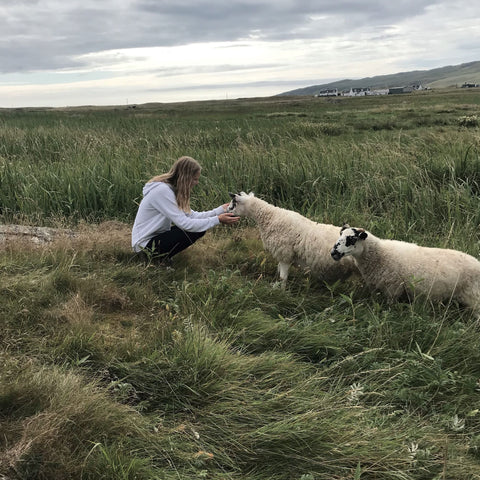Sustainability
The secret of Scottish knitwear’s sustainability is its cultural heritage and the skills that come from generations of experience and expertise. At Hebridean Journey we have always relied on this expertise to bring us unrivalled quality and longevity in our knitwear and blankets. This cultural heritage also ensures that sustainable methods of weaving and spinning are combined with a deep understanding of wool as a precious and natural raw material.
The need for wool products in the cool Scottish climate, such as socks, hats, gloves, scarves and sweaters, goes back nearly as far as the kilt. Weaving in the Scottish Borders began centuries ago as a cottage industry using wool from local sheep, and the abundant supply of water from the River Teviot.
Wool is nature’s most versatile fibre, it has such a complex combination of properties that no other material, natural or man-made can match it. Wool is biodegradable, super soft, warm and breathable and its fibres have a unique surface structure of overlapping scales called cuticle cells. Wool is a natural insulator, it protects the wearer from the weather elements, no man-made fibre has the ability to regulate the body's temperature in all weather conditions like wool does naturally. Wool also biodegrades, so it doesn't accumulate in landfill and oceans. Wool will still shed fibres during washing, but these fibres will break down naturally, without causing any harmful effects to the environment.
Consuming a simple blend of water, air, sunshine and grass, sheep produce a new fleece every year without depleting finite natural resources. Sheep consume organic carbon by eating plants, and store this in their fleece. As long as there is grass to graze on, every year sheep will produce a new fleece; making wool a renewable fibre source. Woolgrowers in the UK actively work to safeguard the environment and improve efficiency, endeavouring to make the wool industry sustainable for future generations.

